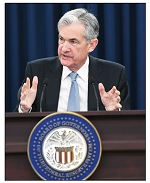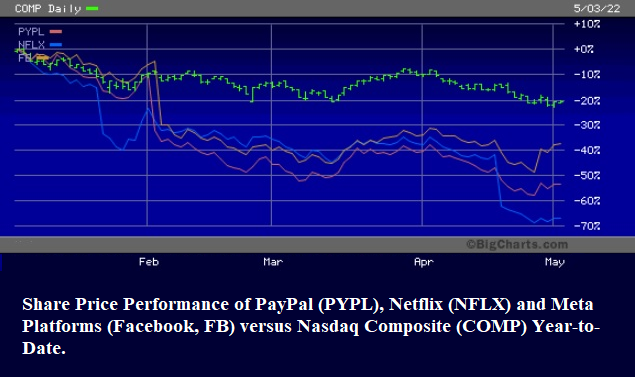By Pam Martens and Russ Martens: May 4, 2022 ~
The Federal Open Market Committee (FOMC) will release its decision on hiking the Fed’s benchmark interest rate at 2:00 p.m. ET today, along with its plans for shrinking the Fed’s $9 trillion balance sheet. The announcement will be followed with Fed Chair Pro Tempore Jerome Powell holding a press conference at 2:30 p.m. ET. (Powell still awaits full Senate confirmation for a second term as Fed Chair, thus the designation “Pro Tempore.”
Wall Street is expecting a 50-basis point rate hike (half of one percent), which would put the Fed Funds rate in a range of 0.75 to 1 percent. Wall Street does not like large interest rate increases from the Fed because five of the megabanks are sitting with a $200 trillion albatross of derivatives around their neck with questionable counterparties on the other side of a lot of those trades. (See our report: Fed Chair Powell Telegraphs the Perfect Storm for Wall Street’s Megabanks: Rapid Rate Hikes Hitting $234 Trillion in Derivatives.)
The Fed is nothing if not obliging to Wall Street. The last time the Fed raised interest rates by a half-point at one meeting was on March 21, 2000 – more than two decades ago. At that FOMC meeting, the Fed Funds rate went from 6 percent to 6.50 percent.
The Fed likely remembers that between March 21, 2000 and March 21, 2002 the bubble Nasdaq stock market lost 60 percent of its value, with numerous bubble companies listed there going belly up.
The Fed knows it can expect a similar outcome with the Nasdaq this time around, following a series of Fed interest rate hikes. (See our report: SEC Chair Jay Clayton Left Markets in the Biggest Mess Since 1929.)
Other comparisons to historic market declines are starting to appear in the business press. On April 29, Barron’s reported that “the S&P 500 index has fallen 13% during the first four months of the year, its worst start since 1939.” Not to put too fine a point on it, but 1939 was during the Great Depression.
As of yesterday’s market close, the S&P 500 index has lost 12.39 percent year-to-date while the Nasdaq has shed 19.69 percent – which is tame compared to what some of its major components have done. Netflix is down close to 70 percent; Facebook has lost almost 40 percent; and PayPal is down over 50 percent. And that’s what’s happened with the Fed’s benchmark interest rate still hovering near the zero-bound range.
What you’re going to hear from Powell today at his press conference is a great deal of careful parsing of words. Pay attention to how many times Powell stops answering a reporter’s question extemporaneously and thumbs to a tab in a big notebook on his podium and starts reading his answer directly from the book. This has been happening regularly at Powell’s press conferences and shows just how nervous Powell is about triggering a temper tantrum on Wall Street.
What you are not likely to hear one question about today from a reporter is why Powell was testifying to the Senate Banking Committee that the big banks were a “source of strength” during the worst of the pandemic while the Fed was secretly shoveling trillions of dollars in cumulative bailout loans to both domestic and foreign global banks. See here and here.
Then there is the Fed’s trading scandal. This Saturday, it will be eight months since the Fed’s trading scandal broke in the news. This is the worst trading scandal in the 109-year history of the Federal Reserve, and yet, the public has heard nothing from the U.S. Department of Justice or the Securities and Exchange Commission as to whether either has opened a formal investigation of the outrageous conduct — which has the distinct odor of insider trading. (See our in-depth reporting on the various aspects of the scandal at this link.)
Adding to the public’s disgust with the trading scandal, Powell had the audacity to ask the Fed’s own Inspector General to take charge of the trading scandal investigation. Unlike the Inspector General of the U.S. Department of Justice, as well as more than 30 other Federal agencies, the Inspector General of the Federal Reserve is not nominated by the President of the United States and confirmed by the U.S. Senate. Instead, the Fed’s Inspector General is appointed by the “head” of the Federal Reserve Board of Governors; he reports to that same Board of Governors; and he can be terminated by the Board of Governors with a two-thirds vote.
You can watch the Fed’s press conference live beginning at 2:30 p.m. ET today at this link.



